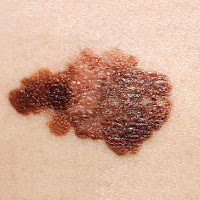 |
Might stem cell grafting or
neuromodulation enable spinal cord
reconnection?
|
A few years ago, I undertook a review of developments in spinal cord injury (SCI) repair that left a deep appreciation of how just how great (and complex) the technological challenge of restoring even partial function following SCI actually is.
The spinal cord, like the brain, is normally biologically isolated from the rest of the body: injury breaches this barrier, triggering an inflammatory response and death of cells essential for repair and maintenance (oligodendrocytes). In the days and weeks following SCI, glial cell proliferation results in scarring which, while reducing inflammation and improving the integrity of the injury site, creates an environment hostile to repair.
The spinal cord, like the brain, is normally biologically isolated from the rest of the body: injury breaches this barrier, triggering an inflammatory response and death of cells essential for repair and maintenance (oligodendrocytes). In the days and weeks following SCI, glial cell proliferation results in scarring which, while reducing inflammation and improving the integrity of the injury site, creates an environment hostile to repair.
Much hope has been placed in stem cell transplantation, and while early clinical studies in handful of SCI patients have shown hints of improvement in motor function, unknowns remain around the choice of stem cell with respect to efficacy and safety (tumour formation is a potential risk), dosing, and how to best create a favourable environment to encourage transplanted cell growth, either mechanically with 3D biocompatible “scaffolds” and/or pharmacological modulation.
Intuitively, stem cells derived from the central nervous system tissue might be among the right tools for the job. University of California researchers have demonstrated that stem cells (neural progenitor cells-NPCs) prepared from human embryonic spinal cord are capable of surviving and maturing when transplanted in monkeys with SCI, with evidence of differentiation into key cell types (neuronal and glial cells), conductive nerve fibre (axon) elongation and bridging of the injury site, and synapse formation. Moreover, partial restoration of forelimb function was noted several months after months after transplantation.
The UC study is of note due to the large numbers of new axons observed extending out of the injury site and into the adjacent spinal cord, suggesting the feasibility of recreating circuitry essential for function. Regeneration of corticospinal axons, responsible for voluntary movement was also observed. Translation into the clinical setting will be slow, but the UC success should encourage further investigation and development of NPC transplantation.
Complete severance of the spinal cord is rare, and a majority of SCI patients have potentially functioning nerve fibres spanning the site of injury, leaving the prospect, albeit of low probability, of some degree of sensory and motor function recovery. A growing number of clinical studies suggest than epidural electrical stimulation (“neuromodulation”) in combination with intensive physical rehabilitation might increase the odds for a least some SCI patients.
A group of Swiss researchers have investigated the mechanisms involved in SCI recovery in an animal model to better understand the how (re)-connectivity might be encouraged, with the finding that a combination of neuromodulation and intensive rehabilitation promotes the functional connection of the motor cortex to nerves below the injury site via the brainstem.
Combining neuromodulation, drug treatment and mechanical means of encouraging locomotion may be a route to restoring some degree of function in SCI and a first-in-man study (“STIMO”: Epidural Electrical Simulation (EES) With Robot-assisted Rehabilitation in Patients With Spinal Cord Injury) is underway, with results anticipated mid-2018.
There is still a long and hard road to be travelled before SCI can be considered as a generally treatable condition, but it’s encouraging to see translational research across different disciplines offering the prospect of new treatment options and perhaps becoming attractive to commercial healthcare players with needed expertise in cell-based therapy and spinal stimulation technology development.
Photo credit: https://www.goodfreephotos.com

